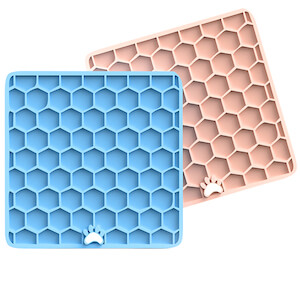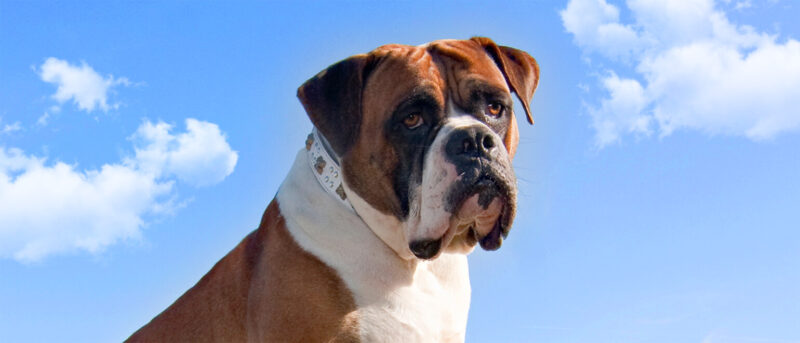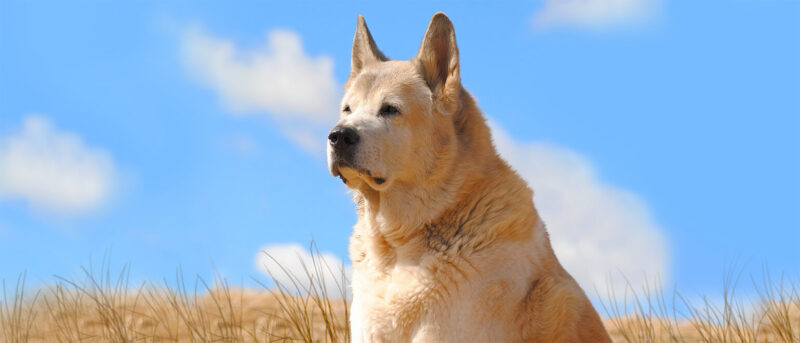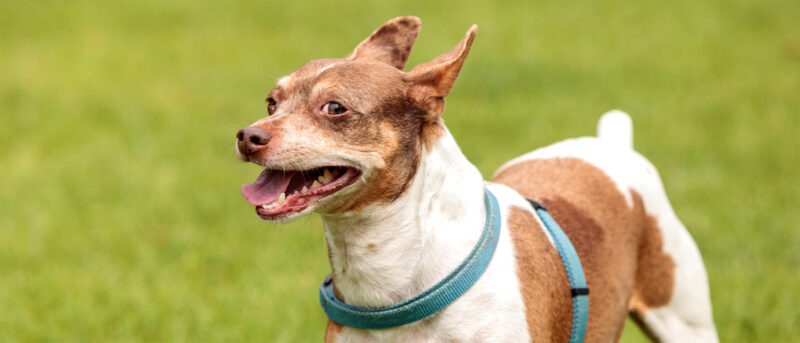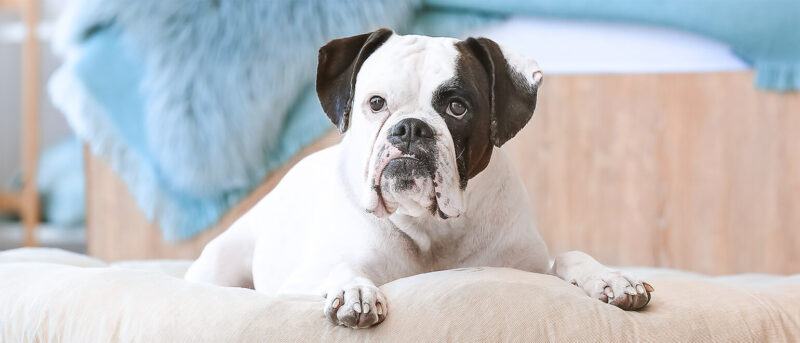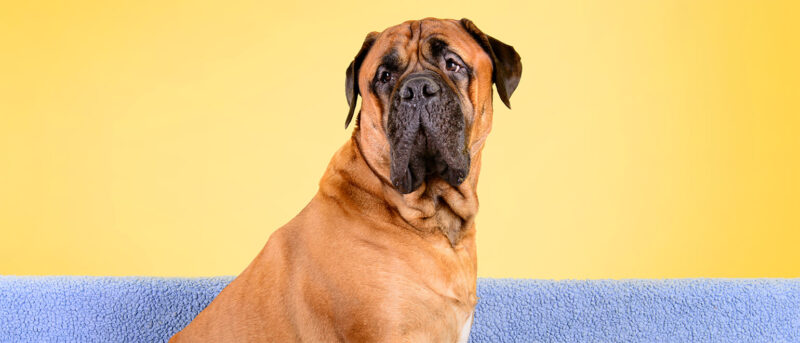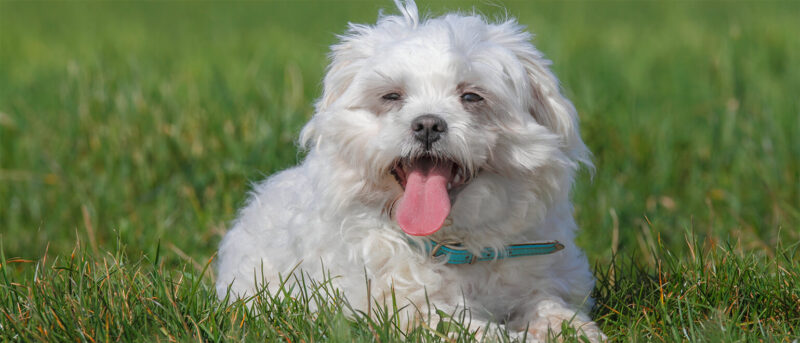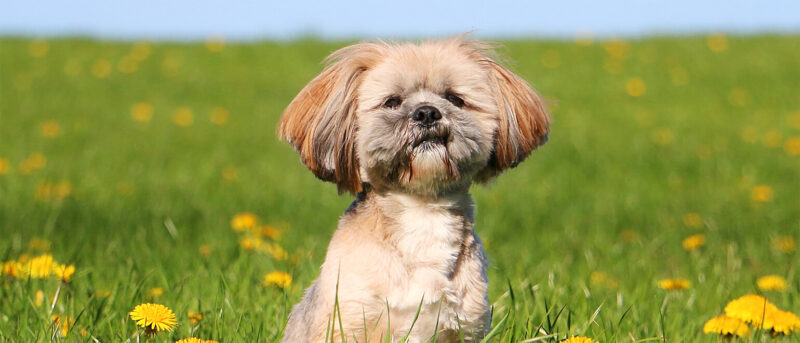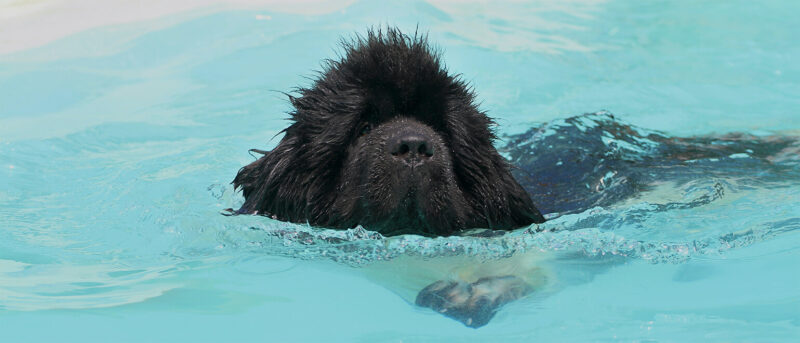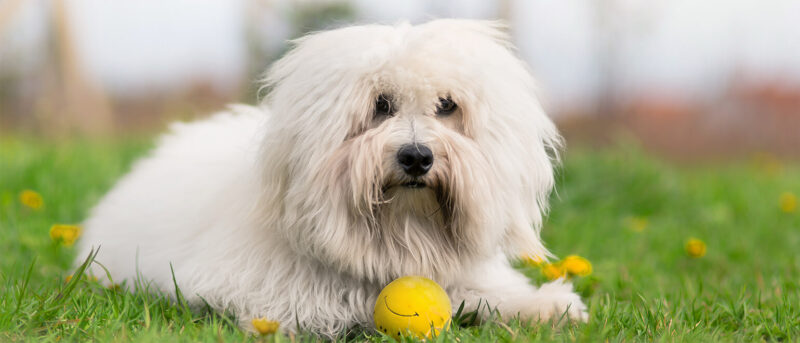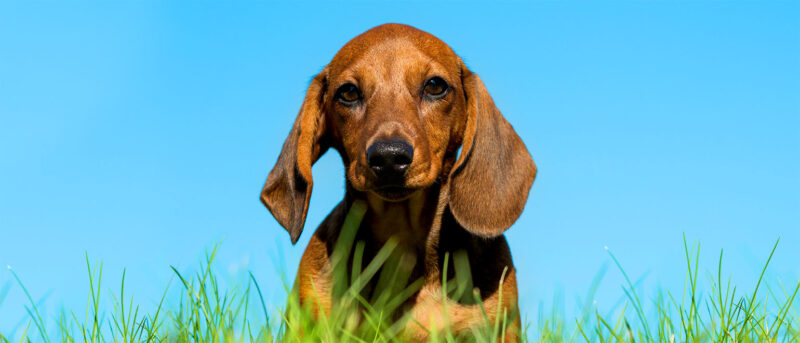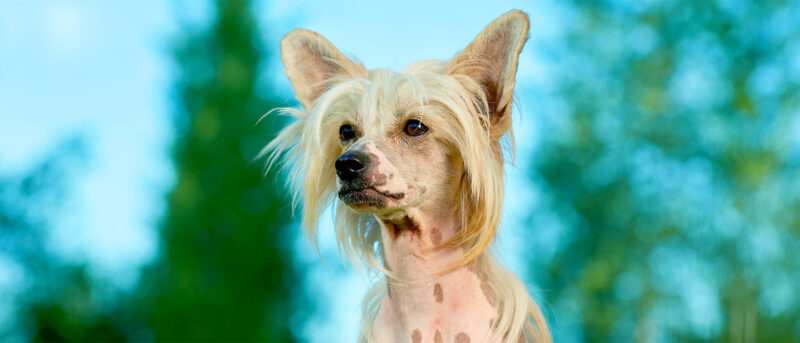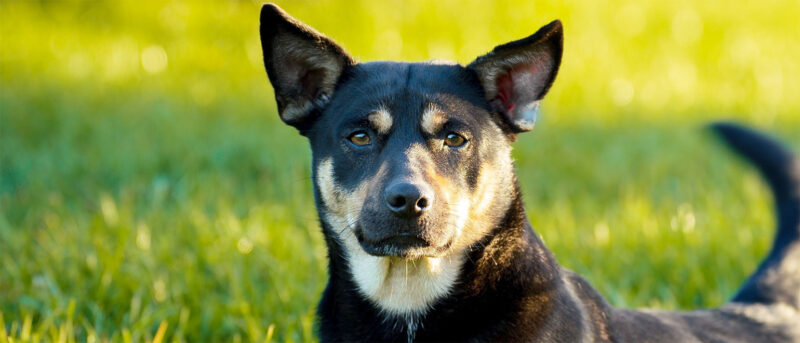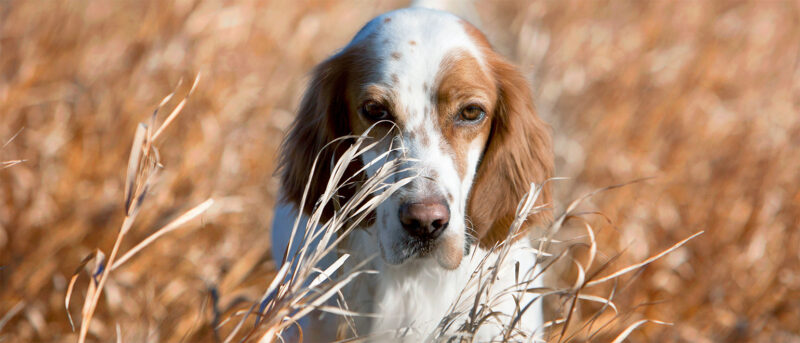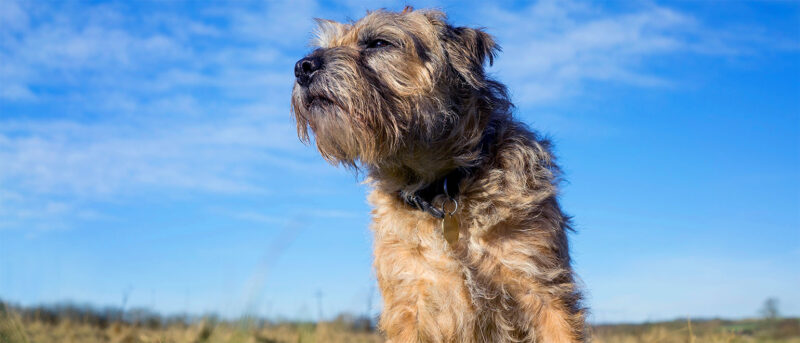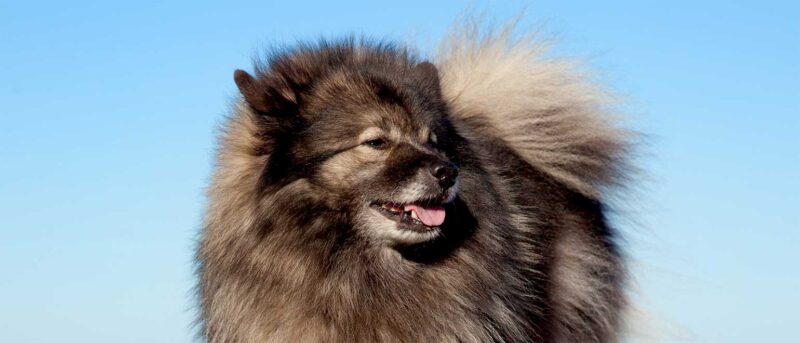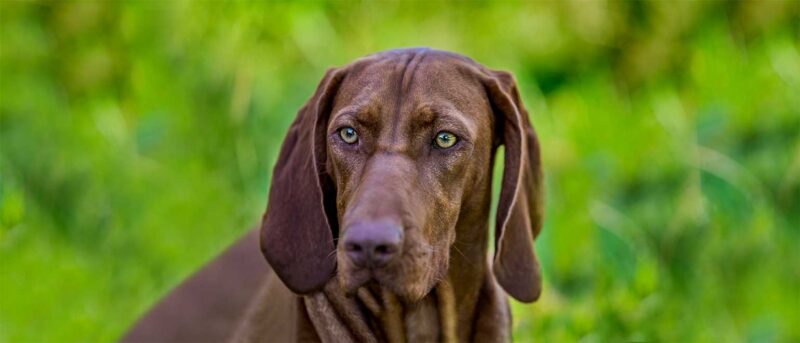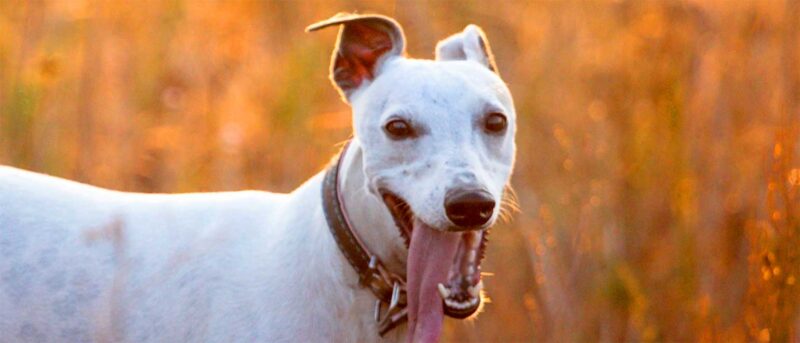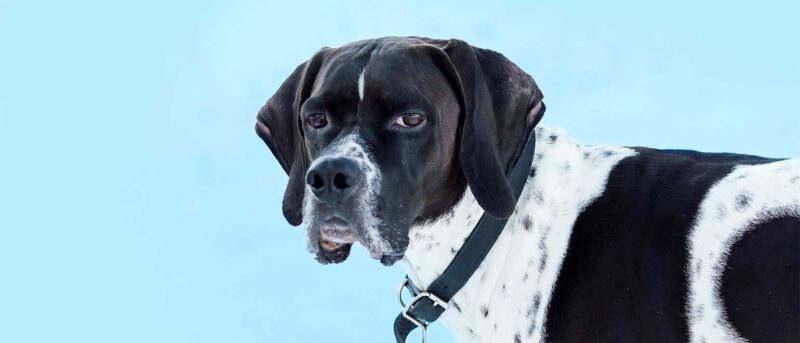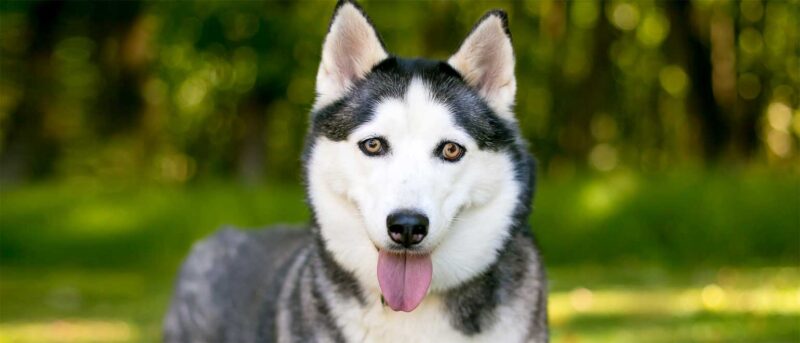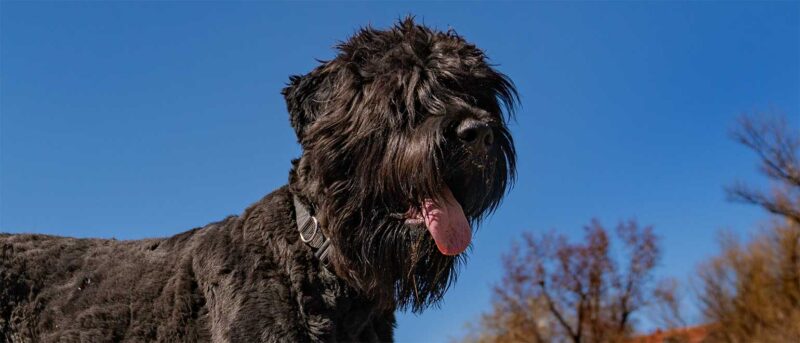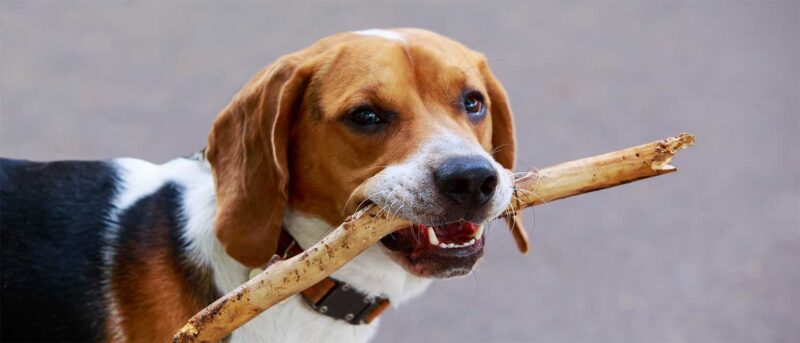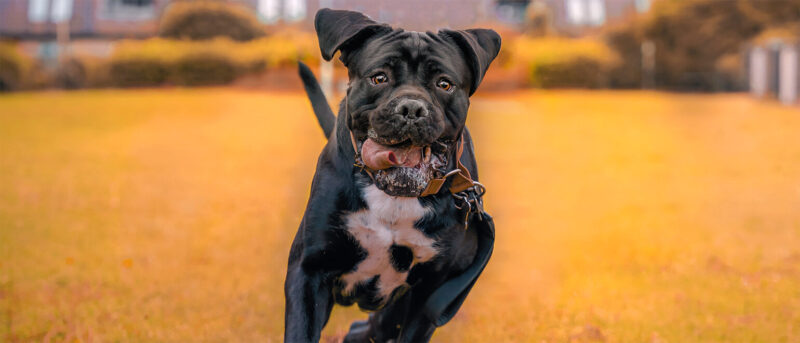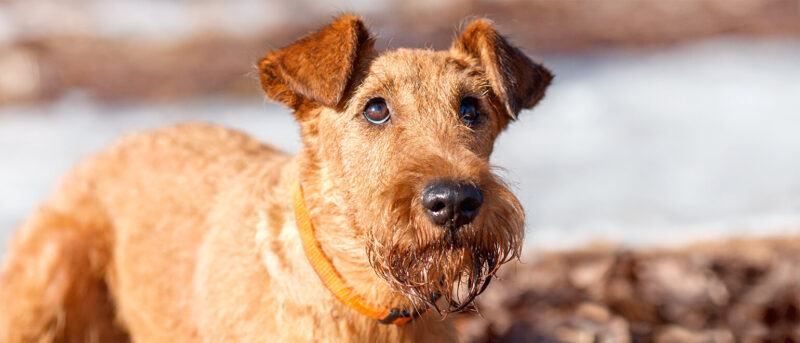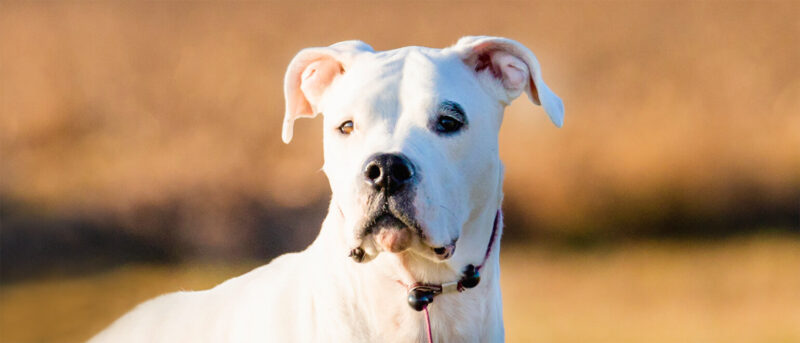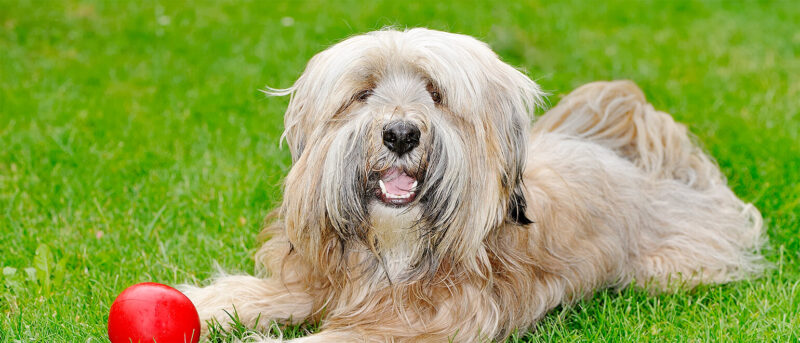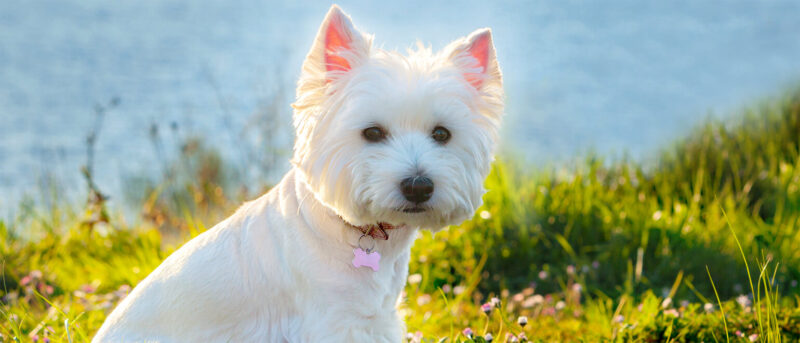Dutch Shepherd Dog Breed Guide: Rare, Talented, and Loyal
Did you know German Shepherds had cousins? With similar personalities and the same versatile abilities, the Dutch Shepherd is the rare cousin of the popular German Shepherd breed. Whether competing, serving as police canines, or offering therapeutic support, this remarkable breed embodies loyalty, affection, and intelligence unlike any other. Despite their origins as a herding […]
Did you know German Shepherds had cousins? With similar personalities and the same versatile abilities, the Dutch Shepherd is the rare cousin of the popular German Shepherd breed. Whether competing, serving as police canines, or offering therapeutic support, this remarkable breed embodies loyalty, affection, and intelligence unlike any other.
Despite their origins as a herding breed, Dutch Shepherds today are more of a family dog than a farm dog. Their playful and affectionate nature makes them an excellent choice for any household. Read on to learn more about the rare and beautiful Dutch Shepherd!
Dutch Shepherd Dog Breed Characteristics
Well-built and fairly muscular, Dutch Shepherds are considered medium to large-sized dogs. Their agility and athleticism are accompanied by remarkable endurance and stamina, making them an excellent herding dog. With powerful hind legs, they move gracefully and swiftly when motivated.
Dutch Shepherds carry themselves confidently, appearing relaxed yet attentive with their ears consistently perked up. The official breed standard strictly prohibits drooping or hanging ears. Their piercing blue or yellow eyes are always darting around, carefully assessing their surroundings.
Alongside their athletic physique, Dutch Shepherds possess powerful jaws, capable of delivering protective bites when necessary. Their teeth meet in a scissor bite, enhancing their impressive defensive capabilities. Dutch Shepherds sport a moderately long tail, which typically arches upwards during moments of activity and hangs straight down while at rest.
Dutch Shepherds typically enjoy a lifespan of approximately 12-15 years, which is slightly longer compared to many breeds of their size. This longevity is notable considering larger breeds often have shorter lifespans than smaller breeds due to their faster growth rates.
Dutch Shepherd Dog Breed Size
On average, Dutch Shepherds stand around 21-24.5 inches at the shoulder. The difference between males and females is easily noticeable as males tend to be slightly larger and wider.
Most male Dutch Shepherds weigh between 50-70 pounds but some can grow up to 75 pounds. Females of this breed tend to be at the lower end of this weight range, and some can even be as small as 45 pounds.
Dutch Shepherd Dog Breed Personality
Bred to work, Dutch Shepherds excel in every task they undertake. Their athleticism, coupled with their high intelligence, makes them highly trainable and obedient companions. With a naturally high energy level, they love to be active.
Dutch Shepherds make wonderful pets because they are so loving and loyal to their owners and family. Lovingly referred to as ‘Dutchies’ these pups are eager to please and love to play with children. Due to their deep affection for their loved ones, they are also very protective. Dutch Shepherds make natural family watchdogs.
Incredibly adaptable, Dutchies are very flexible with their living situations. While they do love to have space to play and be active, they can happily live in a small apartment or small home. The key to their happiness is keeping them mentally stimulated, exercised, and loved.
Dutch Shepherd Dog Breed Exercise
Dutch Shepherds thrive with physical activity, relishing playtime, and outdoor adventures. They make exceptional hiking and backpacking companions, as well as enthusiastic workout partners. Rooted in their herding heritage, they possess abundant energy, making them ideal for active families and individuals.
Even if you’re not a fan of hiking, Dutchies can still make a great pet. Just be sure to give them sufficient daily exercise in the form of multiple walks and playtime sessions. On weekends, make sure to treat them to long walks or time in the outdoors so they can explore to their heart’s content.
Naturally athletic, Dutch Shepherds excel in dog sports. If you’re interested in participating in these types of events with your Dutchie, be sure to look into agility events, nose work competitions, and protection sports in your area. These furry athletes do well in all types of physical activities and respond well to training!
Dutch Shepherd Dog Breed Training
Similar to their German Shepherd counterparts, Dutch Shepherds exhibit remarkable intelligence and learn new commands quickly. Police departments favor German and Dutch Shepherds because they are easy to train for a variety of tasks. They excel as drug or bomb-sniffing dogs and are often used in search-and-rescue missions. These dogs also make reliable personal bodyguards.
As said before, training Dutch Shepherds is relatively easy to do as they are focused, dedicated, and smart. Due to their small population size, Dutch Shepherds didn’t feature on the list of smartest canines, yet their close relatives, the German Shepherds, secured the impressive third spot among the world’s smartest dog breeds!
Due to their naturally high intelligence, you can start training your Dutchies early, when they’re around eight weeks old. Since puppies generally have shorter attention spans, it’s best you keep the training sessions short at the start.
Positive reinforcement is the most effective way to train a dog. Dogs readily respond to treats and praise, grasping the reward system swiftly. If your dog doesn’t immediately follow commands, don’t be discouraged! With patience and consistent repetition, they will undoubtedly catch on in time.
Early socialization plays a pivotal role in a dog’s development and maturity. It teaches them how to interact with other dogs and people, and it will reduce their anxiety when they experience new situations or animals. Even for sociable breeds like the Dutch Shepherd, socialization is important.
Dutch Shepherd History
As evident from its name, the Dutch Shepherd hails from the rural landscapes of the Netherlands, tracing its roots back to the early 1800s. Developed by farmers and shepherds, they were bred for a variety of farm duties, ranging from herding cattle and sheep to pulling carts, protecting gardens from chickens, and serving as vigilant watchdogs. Endowed with remarkable strength and intelligence, they easily surpassed the normal capabilities of the average canine, earning their status as important farm dogs.
Originally, it was difficult for most to distinguish the difference between Dutch Shepherds, German Shepherds, and Belgian Shepherds. However, by 1914, the official breed standard stipulated that Dutch Shepherds could only exhibit brindle coloring, ranging from brownish hues to orange-brown or yellow-brown tones. Since then, the distinct characteristics of each breed have become more apparent, making it easier to differentiate them.
With the arrival of industrialization and modern farming methods in the early 1900s, the Dutch Shepherd was replaced. World War II delivered a crushing blow to the Dutch Shepherd as the war resulted in many dog fatalities and halted breeding. The few that did survive were captured by the Germans and trained for their military.
Bringing the Dutch Shepherd Back
By the end of the war, Dutch Shepherds were nearly extinct. Breeders started mixing dogs of other origins with Dutch Shepherds to make up for their declining numbers. This allowed the breed to survive but as a result, most Dutch Shepherds are not purebreds.
Thankfully, Dutch Shepherds have made a comeback, in part because they are so highly trainable. Dutch Shepherds are used today in search-and-rescue operations, police work, and herding. While they are still rare, you may also find them competing in the dog sports arena and as therapy and assistance dogs.
As of December 2018, the American Kennel Club (AKC) estimates there are fewer than 2,000 active Dutch Shepherds worldwide. Even in their native Netherlands, they remain scarce. The Dutch Shepherd’s rarity is such that it wasn’t until 2017 that the AKC officially recognized them as an official breed.
Dutch Shepherd Health Problems
Thankfully, Dutch Shepherds are naturally healthy dogs. Compared to their cousins, the German and Belgian Shepherds, this breed has a lower chance of inheriting health conditions. That being said, they may still be predisposed to certain health issues.
Hip Dysplasia
Hip dysplasia is a common skeletal condition primarily affecting larger dog breeds but can occur in any breed. This issue occurs when the hip joints develop improperly, leading to friction between the ball and the socket of the hip. Without early intervention, hip dysplasia can cause significant discomfort and pain for your dog.
While hip dysplasia is primarily a genetic condition, it can also occur as the result of an injury. Improper exercise and being overweight can exacerbate hip dysplasia. This is why it’s important to keep a dog at risk of hip dysplasia on a proper diet.
Common signs your dog may have hip dysplasia:
- Difficulty walking, running, or jumping
- Decreased activity or movement
- Limping or joint stiffness
- Lameness in one or both hind legs
- Awkward movement or gait
Hip dysplasia can manifest at any age, and older dogs may develop it alongside arthritis. If you observe any symptoms, it’s crucial to quickly consult your vet. For milder cases, the vet may suggest the following treatments:
- Weight-loss or exercise program
- Physical therapy
- Medications (anti-inflammatory or pain reliever)
- Joint supplements
In cases where hip dysplasia is more severe, your vet may need to intervene with surgery to correct your dog’s joint movement. It may even be necessary to do a total hip replacement surgery to rebuild the hip joint.
In general, dogs that are predisposed to this genetic condition should not be bred to prevent the passing of this problematic gene. The Orthopedic Foundation for Animals (OFA) is a great place for pet owners and breeders to screen for hip dysplasia.
Inflammatory Myopathy
Discovered by the University of Minnesota in 2018, inflammatory myopathy is a rare degenerative muscle condition that specifically affects Dutch Shepherds. This disease is currently characterized by:
- Muscle tremors
- Limb stiffness
- Progressive muscle deterioration
Inflammatory myopathy is a serious health concern typically observed in dogs aged 3 to 9 months. This condition causes severe pain for the dog, often leading to euthanasia to alleviate their suffering. Unfortunately, there is currently no known treatment for this fatal disease. However, end-of-life care options are available for Dutch Shepherds afflicted by this condition.
Goniodysplasia
Canine goniodysplasia is a type of glaucoma characterized by improper drainage of fluid in the eyes. Prompt treatment is essential to prevent vision loss with this inherited disease. Some common signs of goniodysplasia are:
- Sensitivity to light and pain
- Red eyes, dilated pupils
- Eye/winking spasms
- Sunken eyes
- Sudden change in behavior (due to pain)
- Excessive watering in the eyes
Early diagnosis significantly increases the likelihood of successful treatment. Certain medications may help reduce pressure in the eyes, while surgery can also create drainage pathways for the fluids.
If other less invasive treatments don’t stop the pain for your dog, it may be necessary to surgically remove the eyes to prevent suffering. Thankfully, they are very adaptable to living without sight since dogs have such powerful noses.
How to Care for a Dutch Shepherd
Separation anxiety can affect any dog that is left alone for extended periods, particularly breeds like Dutch Shepherds, known for their strong attachment to their families. Dogs experiencing stress or anxiety may exhibit destructive behaviors such as chewing furniture or knocking things over. To limit this unwanted behavior, it’s advisable to minimize the time your Dutchie spends alone whenever possible and to supplement them with all-natural stress + anxiety relief.
Boredom can indeed trigger destructive behavior in Dutch Shepherds. Consistently engaging your Dutchie both physically and mentally is key. Play games, run around with them in the backyard, and keep their minds active. A tired Dutch Shepherd is typically a happy one!
Nutrition and Feeding for a Dutch Shepherd
Dutch Shepherds, being medium to large-sized dogs, typically require a substantial amount of food. A daily serving of approximately 2-3 cups of high-quality dry dog food is recommended for your Dutchie. However, the precise amount may vary depending on factors such as the dog’s activity level, age, and size.
Comprehensive dog supplements can complement your Dutchie’s diet and ensure they receive essential nutrients. Vitamin supplements can enhance immune health, while probiotics aid digestion. It’s always wise to consult with a veterinarian to determine the best supplements for your Dutchie’s specific needs.
Coat Color And Grooming
Short-hair, long-hair, and wire-hair (also called rough-hair) make up the three different coat types for Dutch Shepherds. Their base coat color is typically gold or silver while some may be a shade of red or peach.
Dutch Shepherds are known for their brindle coats, characterized by streaks or patterns of darker markings. Excessive black or white markings are generally discouraged and do not conform to the breed standard.
Short-haired Dutchies generally have stiff fur that adheres close to the body. Beneath the hard outer coat lies a soft, wooly undercoat, helping the breed adapt to a variety of weather conditions.
Long-haired Dutch Shepherds exhibit straight, well-fitted fur that lies close to the body. The fur coat is coarse to the touch and hangs straight down. Additionally, there is extra thickness and feathering around the head, ears, feet, and legs in long-haired Dutch Shepherds.
Wire-haired Dutchies feature a dense, curly coat that covers the body. Adorably, this coat comes with additional hair around the upper and lower lips and under the chin, resembling a beard. The hair texture is rough and harsh, necessitating hand-grooming at least twice a year.
Grooming Tips
Brushing Routine & Shedding Prevention
Since short-haired Dutchies do not shed as much, they don’t need to be brushed as often. However, long-hair and rough-hair varieties need to be groomed weekly. Some pet owners find rough-hair Dutchies difficult to groom, so it may be beneficial to take your dog to a professional groomer once or twice a year to help with grooming.
Brushing your Dutchie has many benefits and presents a wonderful bonding opportunity. Regular brushing helps remove dead hair, preventing loose fur from accumulating around your home. It also serves to eliminate dirt and debris, untangle any matting, and allow for thorough flea inspection.
During fall and spring, Dutchies undergo a significant shedding process, commonly referred to as “blowing their coat.” It’s essential to brush them daily during these periods to assist in the transition of their seasonal coats. You may observe clumps of fur falling out or general patchiness, which is entirely normal and is no cause for concern during this natural shedding process.
Ideally, you may want to groom them outdoors during shedding season to prevent making a mess inside your home. Shedding can be further mitigated with a good shampoo. Consider adding a soothing CBD Balm to their post-bath routine to help nourish your dog’s fur and skin while simultaneously delivering relaxing, anti-inflammatory benefits.
Bathing Needs
Bathing your Dutchie once every couple of months or as needed, especially if they get dirty, is recommended. While they typically maintain cleanliness well, bathing serves as an opportunity to inspect their bodies for any cuts or scrapes and to wash away dirt and odors.
Oral Care
You can prevent gum disease and tartar buildup by brushing their teeth daily or at least a few times a week. If you notice stinkier breath than usual, it may be a sign to increase how often you brush their teeth.
Nail Maintenance
Keeping your dog’s nails short is important, although their active lifestyle may naturally wear them down to a healthy length. If you notice clicking on the ground when your Dutch Shepherd walks, it’s time for a trim. Exercise caution not to cut too close, as dogs have blood vessels near the base of their nails.
Children And Other Pets
Dutch Shepherds are fantastic companions for kids! They quickly learn how to play gently and exhibit a natural protective instinct towards small children. Growing up alongside a Dutchie can be an enriching and memorable experience for any child.
It’s also worth noting that a Dutchie’s friendly and sociable personality allows them to get along better with other dogs than many other breed types. Encouraging them to play with other dogs when they are a puppy is a great way to socialize them.
Since Dutch Shepherds aren’t hunting dogs, they don’t have a natural prey instinct. Generally speaking, Dutchies are great with smaller pets like cats and even hamsters. That being said, stay on the safe side and supervise their first interactions with new animals to ensure that they get along.
Rescue Groups
Rescue groups are remarkable organizations dedicated to rescuing abandoned or homeless dogs from the streets. Run by wonderful volunteers, these groups often provide essential medical care and work tirelessly to rehome these dogs. Additionally, local rescue groups can be excellent resources for finding specific breeds available for adoption in your area.
The California Dutch Shepherd Rescue stands as one of the most significant rescue groups for this breed. Their primary objective is to rescue Dutch Shepherds, providing rehabilitation and relocation services while also educating the public about the breed’s many admirable qualities. Their impressive track record includes the rescue of over 2,725 dogs, a testament to their dedication.
Breed Organizations
The Dutch Shepherd Dog Club of America (DSDCA) stands as an exceptional breed club for Dutchies. Established by the United Kennel Club (UKC) as the official club in the United States, the DSDCA is dedicated to advancing the breed. They achieve this by organizing events, competitions, and meet-ups for all Dutchie enthusiasts.
Breed organizations serve as excellent sources for expanding your knowledge about the Dutch Shepherd breed. The DSDCA website offers valuable insights and even connects you with reputable breeders, making it a perfect starting point for those considering adopting a Dutchie.
As Dutch Shepherds are such a rare breed, they can be more expensive to purchase than other dogs. You can expect prices to range from $1000 to $2500. Dutchies with a superior pedigree and more comprehensive health screenings can cost anywhere from $3000 to $7000. To ensure your Dutchie is healthy, be sure to only patronize reputable breeders.
More About This Dog Breed – Dutch Shepherd
The Dutch Shepherd truly stands out as an extraordinary breed, combining beauty, loyalty, and intelligence into a single furry package. Encountering one is super lucky, given their status as one of the rarest dog breeds in the world!







